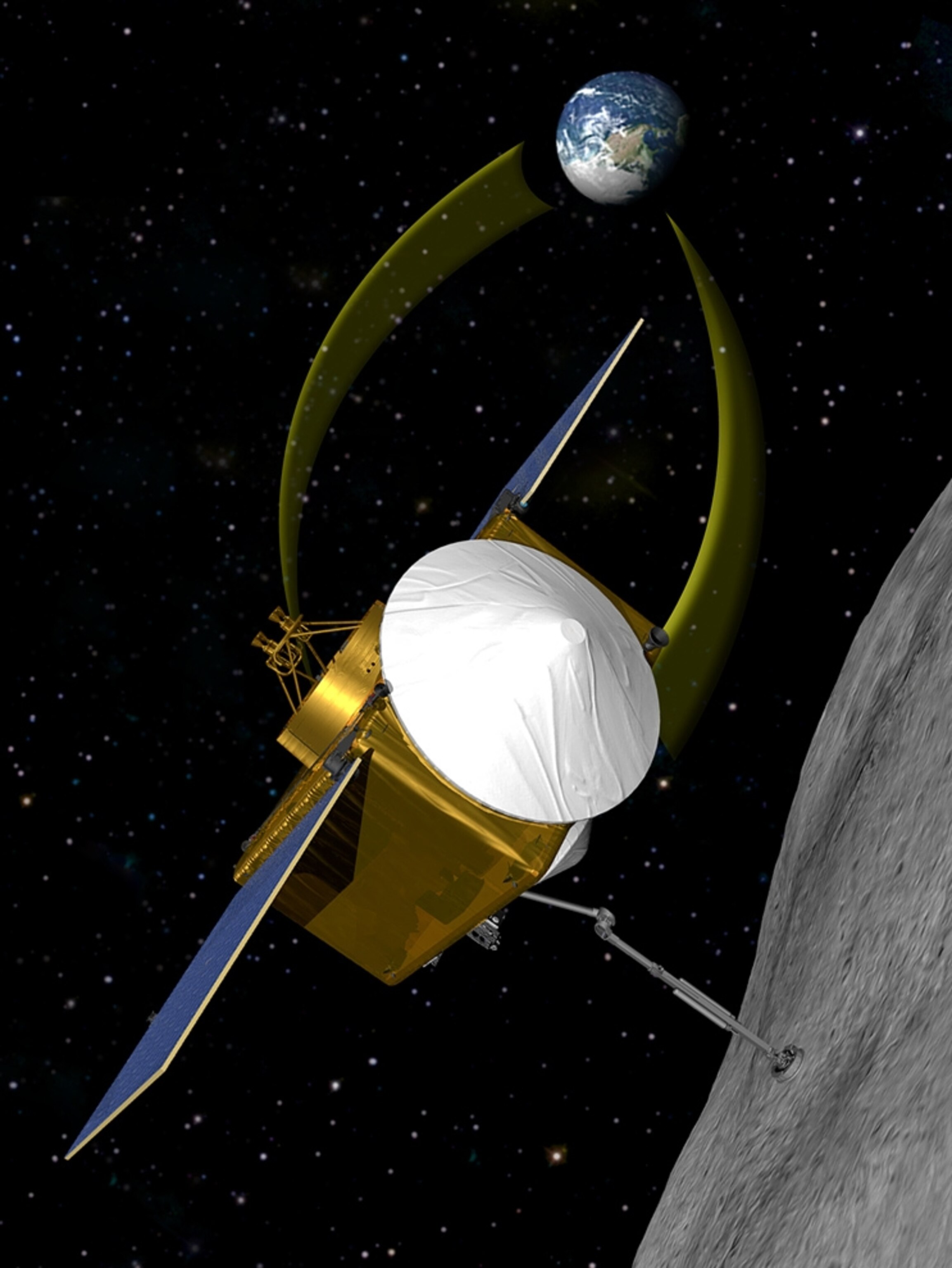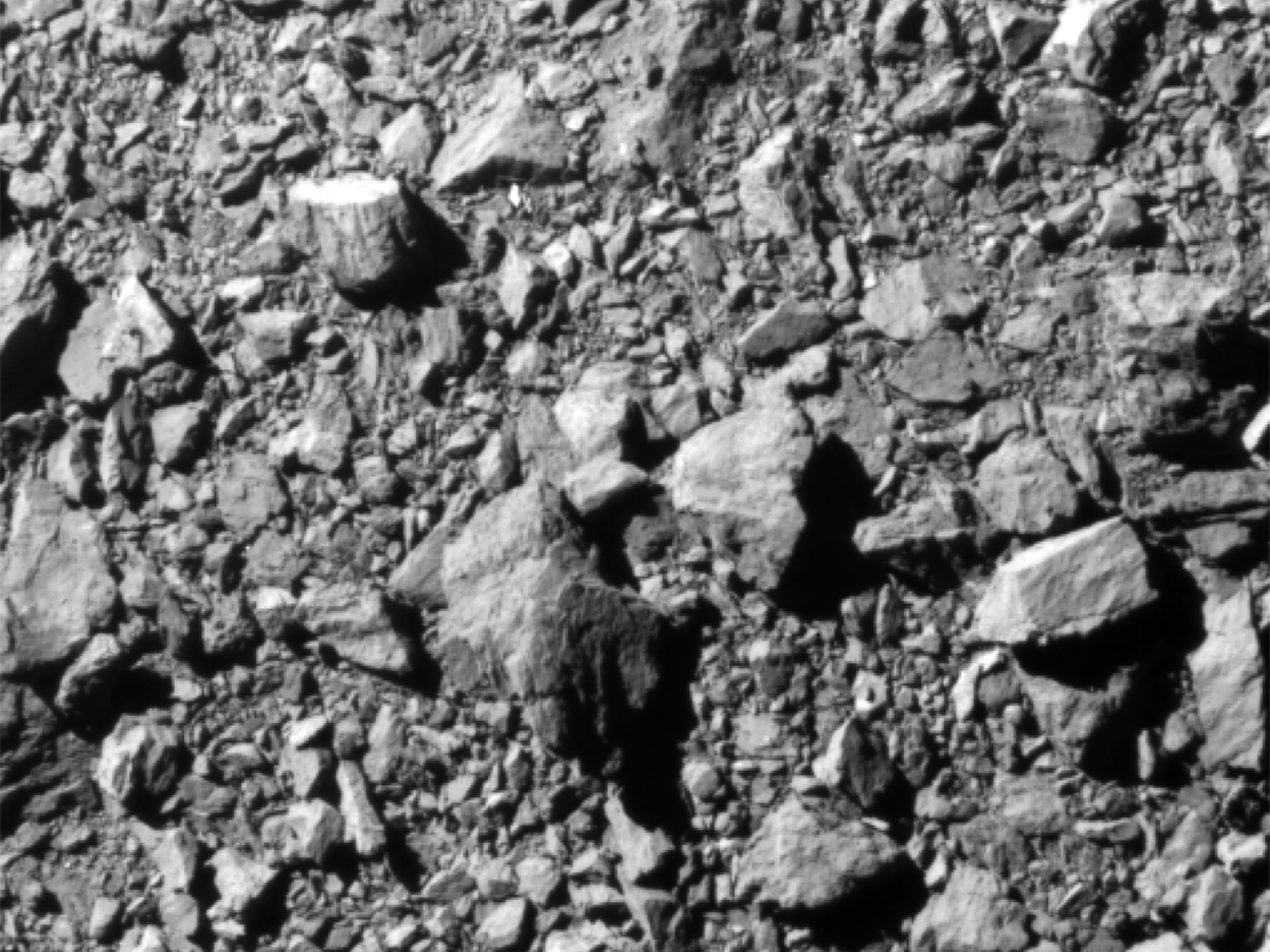
NASA Asteroid Mission Set for 2016
OSIRIS-REx mission will bring back samples of carbon-rich space rock.
A NASA spacecraft has been approved to launch in 2016 to visit a near-Earth asteroid, mission managers announced today.
Dubbed OSIRIS-REx—for Origins Spectral-Interpretation Resource-Identification Security Regolith Explorer—the robotic craft will conduct the first U.S. mission to collect pieces of an asteroid and bring them back to Earth.
OSIRIS-REx was selected out of three projects under consideration for funding by NASA's New Frontiers Program, which aims to develop uncrewed spacecraft missions designed to help us understand our solar system.
The two missions that did not make the cut this round were a sample-return from the far side of the moon and a trip to the surface of Venus. Both missions could be resurfaced in the next round of New Frontiers proposals.
NASA ultimately decided to fund the roughly billion-U.S.-dollar OSIRIS-REx mission because its scientific goals seemed the most feasible in terms of management and cost, Paul Hertz, chief scientist for NASA's Science Mission Directorate, said today during a press briefing.
Also, NASA Administrator Charlie Bolden noted that the OSIRIS-REx mission will be a key part of U.S. President Barack Obama's plan for sending humans into deep space.
"It's robotic missions like these that will pave the way for future human space missions to an asteroid and other deep-space destinations," Bolden said in a press statement.
Asteroid Mission to Search for Life's Origins
When it launches, OSIRIS-REx will be bound for asteroid 1999 RQ36. (Also see "NASA to Visit Asteroid Predicted to Hit Earth?")
This 1,886-foot-wide (575-meter-wide) space rock orbits between 83 million and 126 million miles (133 million and 203 million kilometers) from the sun. It passes within about 280,000 miles (450,000 kilometers) of Earth's orbit.
What most excites the science team is that the rocky, carbon-rich asteroid is like a time capsule from the formation of the solar system 4.5 billion years ago, said Michael Drake, director of the Lunar and Planetary Laboratory at the University of Arizona and leader of the OSIRIS-Rex mission.
"Planets as big as ours sterilized themselves, because they melted repeatedly as they formed," Drake said. "But here we are with animals and trees and blades of grass—organics had to come from somewhere."
From other ground-based and satellite studies, scientists believe RQ36 is very rich in organic molecules, although we don't yet know exactly what kinds.
By visiting the asteroid up close and bringing back pristine samples, the researchers hope to answer the question of whether similar asteroids could have seeded Earth with the building blocks for life.
(Related: "Huge Asteroids Brought Gold to Infant Earth, Study Says.")
Asteroid Visit Will Be Televised
The OSIRIS-REx spacecraft is slated to reach RQ36 in 2019 and spend about a year studying the asteroid with a suite of instruments, including optical cameras, a near-infrared surface mapper, a thermal-emission spectrometer, and a scanning lidar.
The accumulated data will give scientists new information about the asteroid's exact shape and mineral composition as well as a better understanding of something called the Yarkovsky effect. This effect occurs when an object absorbs sunlight and the resulting heat emanating from the surface gives the object slight "nudges."
Over time, these tiny pushes can greatly affect an asteroid's orbital path—something crucial for scientists to understand when calculating the impact risks from asteroids that sweep close to Earth's orbit.
About six months into the mission, the OSIRIS-REx science team will pick a spot on RQ36 for the spacecraft's arm to reach out and take a sample, hopefully collecting more than two ounces of material.
The craft is due to return to Earth in 2023, sending its detachable sample-return capsule to land in Utah's Test and Training Range. If all goes as planned, the main body of the craft should have enough fuel left to be redirected for additional, yet to be announced missions.
(Related: "First Asteroid Dust Brought to Earth Holds Clues to Planet Birth.")
While six years may seem like a long while to wait for the craft's big payoff, mission managers stress that they'll be collecting valuable science from the time OSIRIS-REx arrives at the asteroid.
And upon arrival, the spacecraft will start sending back "essentially near real-time, almost movie-quality video of what we are doing ... including of the sampling event itself," Drake said.
"We will be able to stream that in a way that's like the public going along for the ride."





